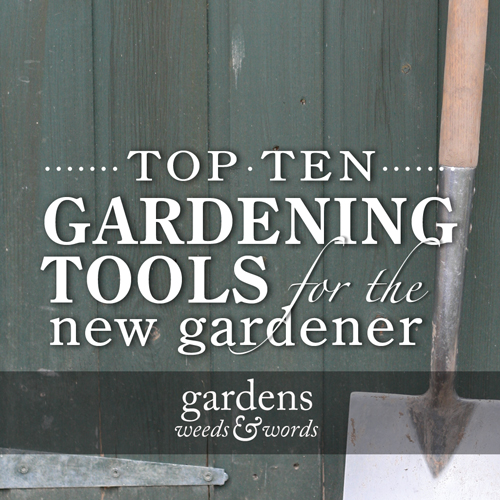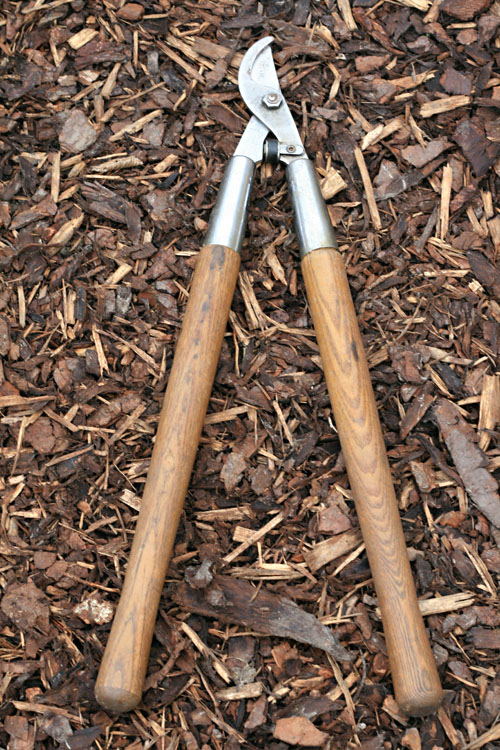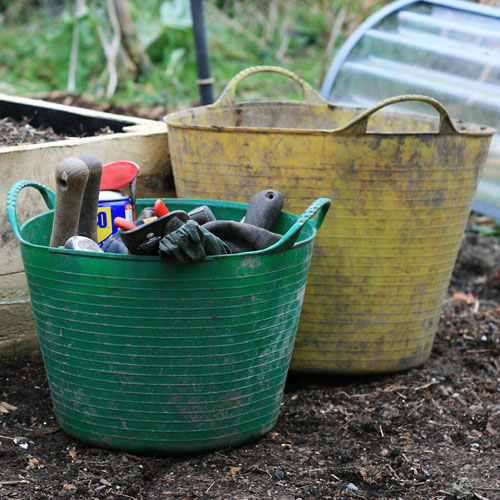Do you ever feel you’re getting buried under the weight of information and conflicting opinions on the internet? It’s as true with gardening as any other subject you might throw at Google. So in this post, I’m recommending you buy a packet of seeds and get on with sowing the contents. Then you can read the advice, contradictory or otherwise – but at least that way you’ll have avoided the procrastination hump.
Read moreRabbit damage
Undoubtedly cute in the right place, but a magnificent pain in the backside in the garden – furry critters have been wreaking havoc again. This time the rabbit damage was limited to a fig tree, but its survival is still very much in the balance.
Read moreThe Joy of Squash
Every gardener has a favourite or two. Something that, left ungrown, would render the season incomplete. Given I have limited space, mine should have been chillies; compact, pretty plants bearing bright, spicy jewels. Or tomatoes – you can shove an alarming number of those in a greenhouse. and the taste of a warm, sun-ripened tomato is hard to beat. But no, for me it’s squash.
Read moreResolution 2017
I’m not big on new year’s resolutions. To my mind, every day brings with it an opportunity to do better – why wait till January to make them, and then spend the remainder of the year berating yourself for breaking them? With something seasonal, like gardening, however, it makes sense. But I’m still limiting myself to one.
Read moreDecember light
Light is in short supply this month, and so it makes sense to make the most of the little we have. For reasons of sanity, not to mention Vitamin D. It’s as good a time as any for garden photography, and the more familiar you are with the behaviour of the light, the better your images will be.
Read moreThe bonfire of deplorables
Autumn turns to winter, the leaves are all but tamed, and a short window of opportunity opens. While it’s still warm enough feel your fingers, there’s just time to clear the beds in preparation for a good, thick mulch. But what to do with all the stuff this produces – compost, or burn? It helps to have a plan.
Read moreThe seedier side of gardening
There’s nothing I like better than a spot of horticultural retail therapy, which often involves ordering from the seed catalogues far more than I could reasonably hope to raise in a year. Autumn brings the chance to gather seed for ourselves, an activity for which our gardening lives are all the richer.
Read moreHeat stress
Taking a summer holiday can be a traumatic prospect for the gardener. But with a bit of preparation, there’s no cause to worry that your plants will die of thirst in your absence. What’s more, a decision to step aside momentarily from the perpetual onward march of the gardening year creates the thinking space in which to reflect on the current season, and plan for the year to come.
Read moreTop ten gardening tools for the new gardener
This post contains affiliate links, meaning any product bought through a link on this page earns me money which will be spent on cake and gin.
The early stages of any new hobby often concerned with the acquisition of various accoutrements. You wouldn’t begin golfing without getting hold of a bag of whacking sticks and, similarly, the novice skier must first invest in a Michelin Man costume and those long things you wear on your feet. Often, the interest doesn’t get much further than this early phase of equipment gathering; I have a set of draining rods gathering dust in a corner of a shed somewhere, but, other than a half-hearted session every other year when the toilet flush is a bit sluggish, I’ve never really got into it as a pastime.
That said, I have built up a large collection of gardening tools over the years, and my sheds are bursting with many useful pieces of equipment, as well as several that are more ornamental than functional. But the following tools, in approximate order of priority, are the absolute essentials, which are loaded into my barrow at the beginning of every day.
A note about the suggested tools on the affiliate links. These are the tools I use on a daily basis – nothing particularly fancy, but not the budget end of the market either as, being a jobbing gardener, I need my kit to be fairly resilient. For more occasional use at a lower price point, you might like to have a look at Sara Venn’s blog post on the recently released range of gardening tools from Poundland.
1) secateurs, for lighter pruning and cutting small stems up to 15mm thick. Sometimes called “hand pruners”, this is a two-handled sprung tool that you operate with your stronger hand, essential for harvesting flowers and vegetables, deadheading, and pruning everything from roses to fruit trees. I prefer the bypass type, which has a pair of blades that cut with a scissor action, rather than the anvil type – a single blade and an anvil (think kitchen knife and chopping board) –which I find have a tendency to mash the stems.
Many people will be familiar with the red plastic-coated handles of the leading, Swiss made Felco brand, although the Japanese Okatsune pruners (available from niwaki.com) are gaining popularity in the UK for their simplicity and the excellent quality of their steel blades. Neither make is particularly cheap – you’re looking at forty quid and up. There are however many copies, particularly of the traditional bypass type, which are perfectly serviceable and a fraction of the price. I’m a sucker for ‘heritage’ marketing, so this pair with rosewood handles from Draper appeals.
2) hand fork, for weeding. There was a discussion a while back on social media over who favoured and hand fork over a trowel as their go-to everyday tool. As I’m rarely without either hand fork or secateurs in my hand, I was surprised to see so many votes for the trowel. At the time I surmised that those who preferred the fork, like me, were working heavier soils than the group who habitually reached for the trowel.
There’s nothing quite so handy as a hand fork for speedy removal of small to medium sized weeds without churning the surrounding area up, and the individual tines are perfect for winkling in among the roots of, for example wood avens or creeping buttercup, before levering the offending plant out. With the passage of time, I’ve simply returned to my original conclusion that members of the trowel brigade are simply bonkers, unless digging small planting holes occupies the vast majority of their time in the garden. Or they’re unusually adept at, say, knitting with a pair of spoons.
3) small border fork, for weeding/ turning and tickling the soil. This is a long handled fork you use in a standing position, like a spade, about two-thirds the size of a regular garden fork. I used to use the larger, heavier version on a daily basis until a session of prolonged and energetic forking gave me tennis elbow, costing me several visits to the osteopath and weeks of discomfort. This compact size is also perfect for getting in among the plants in a tightly packed herbaceous border.
My second best border fork, presently in a state of semi-retirement. Does a splendid job, in spite of the bent tines.
A fork made from drop-forged steel is heavier and thicker, but less likely to bend. Stainless steel tends to be lighter, and better for use in damp heavy soils, but bends easily. I use stainless, and accept bent tines and a fairly regular replacement cycle as an occupational hazard.
4) rake. There are several kinds of rake for slightly different uses. I find a large plastic leaf rake invaluable as it helps me to tidy the area where I’ve been working quickly, as well as being invaluable in autumn and winter when the trees are dropping their leaves (remember, evergreens drop leaves all year round!).
I spend a lot of time with this tool, and experience has taught me I need one as big and as light as I can find. I use the Fiskars Large Light Lawn Rake, which fits the bill perfectly.
5) folding pruning saw, for cutting thicker stems than the loppers when pruning large shrubs or trees.
Most pruning saws have their teeth arranged so that they only cut on the pull stroke. Mine cuts on both push and pull strokes, is small and exceedingly sharp, and replacement blades are easy to come by. And a manly grey/black version of it is used by Ray Mears as a survival/woodcraft tool, so there’s a recommendation for you.
6) loppers, for cutting stems thicker than the secateurs can manage.
A pair with telescopic arms and a ratchet head is very useful, to increase your reach and reduce the force you need when cutting through thick branches to about 45-50mm in diameter.
7) spade, for large planting holes and for serious digging, for example stubborn, tap-rooted weeds like hogweed, or for moving established shrubs with a large rootball. There are many permutations of spade, encompassing everything from the material used for the blade to the shape of the handle.
I used to abuse spades horribly, snapping countless handles by using them to lever out large shrubs – you should never use a spade to lever out a stubborn shrub or tree. That’s what mattocks, with their thick, strong pick-axe handles, were invented for. Or Land Rovers – having spent days excavating around a very stubborn japanese spindle, I did once resort to using the Defender to finally persuade the roots from the ground. When I used to occupy myself over winter single- and double-digging new borders, I swore by my treaded digging spade from Bulldog Tools, whose all-metal construction resisted my abuse for several years, until one day it too succumbed and creased where the blade met the shaft. Now, I use a light, traditional looking spade with a stainless steel blade and ash handle. And I treat it kindly.
8) hoe, for quickly putting an end to emerging weed seedlings.
As soon as the soil is dry enough in spring, you can run the blade of a dutch hoe just below the surface, severing the weeds from their roots, and leaving them to shrivel on the surface of the soil, into which they’ll rot down. Persistant weeds will need repeated hoeing, but it’s surprising just how large an area can be covered in a few minutes. Used regularly, this can transform a weedy plot with very little effort. The relatively small size of the head makes this tool ideal for weeding between rows on the allotment, although care needs to be taken if you’re not to slice through your precious vegetables as well as the weeds.
9) plastic tubtrugs. I carry my hand tools in a small tubtrug, and use the medium size for for dumping weeds into, or for transporting divided plants to their new locations, or gathering up windfall apples in autumn. Absolutely invaluable wherever I am in the garden.
10) hand trowel, for smaller planting holes.
It’s been quite a challenge keeping the list down to just ten tools. I’ve not, for example, included the wheelbarrow I mentioned. Mine is made with a plastic/ABS tray, the metals ones being too heavy and not usually big enough. I’d also recommend a barrow with a pneumatic tyre, which cushions the load and relieves some of the vibration transferred through to your arms, back and shoulders when pushing a heavily laden barrow about.
The list is also appropriate to the kind of gardening I do on a daily basis. If you’re gardening primarily on an allotment or the veg patch at home, you’d probably want to swap out the loppers at no. 6 for a traditional garden rake that will help you get a nice, level and crumbly surface to your soil (called a tilth by those in the know) into which you can sow your seeds.
This is my essential kit, but of course for every job in the garden there are supplementary tools to make the job easier. For vegetable beds I’ve already mentioned the soil rake, but I’d find it worthwhile to keep a smaller onion hoe, and an azada spade or a mattock. For hedges I’d be lost without at least a pair of hand shears, if not a petrol hedge trimmer. While I might get away with adding just a patio knife and a long handled wire brush for paths, who could maintain a lawn without at least a mower, a strimmer, a pair of edging shears, a half-moon iron and a spring-tined rake? And for every kind of garden, a leaf blower for the finishing touches, and a set of old boards from which you can work in wetter weather without damaging the soil.
If you’re new to gardening, I hope you find this list useful. And if you’re an old hand, let me know if your list of top ten gardening tools differs from mine.
Mahonia in the winter garden
Mahonia in the winter garden. Rather a prickly customer, and sadly overlooked for much of the year. It chooses its moment, though, waiting for half the garden to be caught snoozing before bursting into flower. Every garden should have one.
Read more










